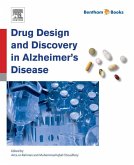Parkinson's disease is the second most prevalent neurodegenerative disease and is characterized by the irreversible loss of dopamine neurons. Despite its high prevalence in society and many decades of research, the origin of the pathogenesis and the molecular determinants involved in the disorder has remained elusive. Confounding this issue is the lack of experimental models that completely recapitulate the disease state. The identification of a number of genes thought to play a role in the cell death, and development of both toxin and genetic models to explore the function of the genes both in unaffected and diseased cells are now providing new insights into the molecular basis of the neurodegeneration, as well as therapeutic approaches. In this reference, we will describe the advances and the advantages that various invertebrates, cell culture, rodents, and mammals provide in the identification of the molecular components and mechanisms involved in the cell death, and outline the opportunities that these systems provide in drug discovery.
- Comprehensive and critical assessment of the utility of various model systems to identify the molecular components and pathways involved in Parkinson's disease
- Describes the power of toxin and genetic models to identify novel therapeutic targets and compounds that can be used in PD
- Current overviews of current status of PD research and discovery from bench-to-bedside
- Provides novel insights and views on where the future of PD research may lead
- Provides a powerful teaching tool and template to explore the utility of model systems to identify molecular pathways, molecular targets, and therapeutics that are applicable to a variety of neurological diseases
Dieser Download kann aus rechtlichen Gründen nur mit Rechnungsadresse in A, B, BG, CY, CZ, D, DK, EW, E, FIN, F, GR, HR, H, IRL, I, LT, L, LR, M, NL, PL, P, R, S, SLO, SK ausgeliefert werden.









